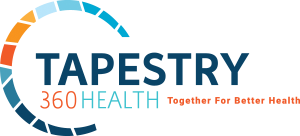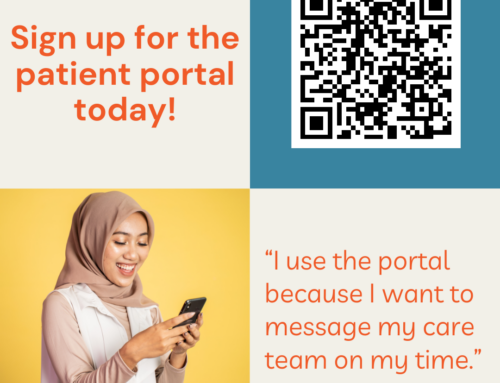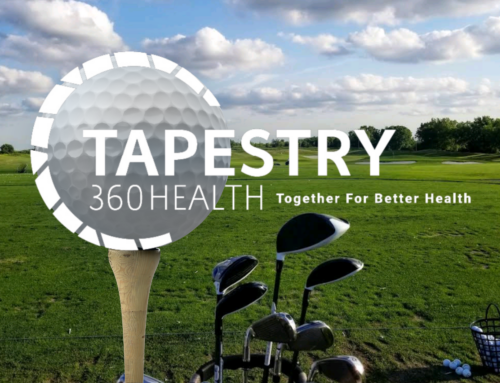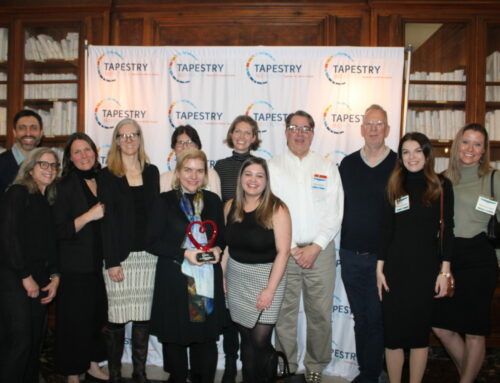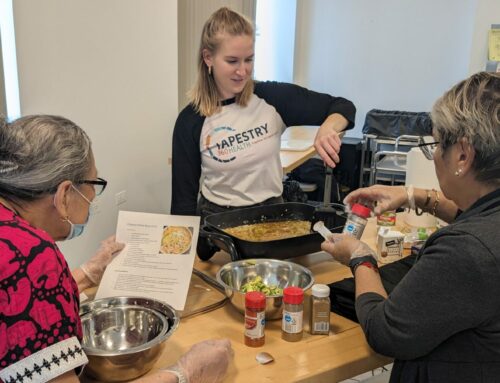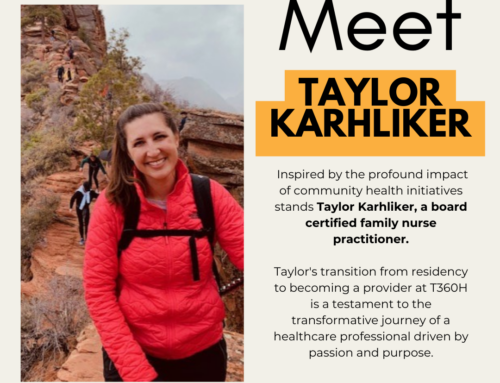News
Roosevelt, Sullivan & Uplift students share pandemic stories in ‘My COVID Year’ project
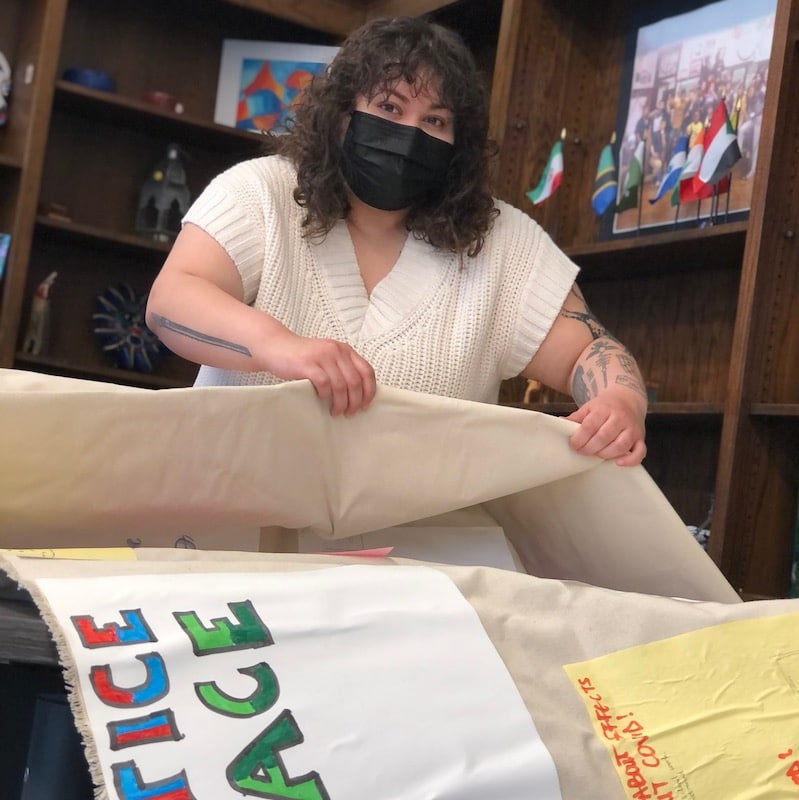
School-based health centers use Ralla Klepak Foundation grant to help students process their experience through dance, improv and other arts
As the year of ‘return to in-person learning’ winds up, high school students looking back know the past two years of pandemic, violence such as the killing of George Floyd and more put them through hard times:
“You had to wear masks. You could go to your grandparents’ house if you wanted, but you couldn’t really go into stores.”
“It was a lot. What really affected me was school…. It was not good for my brain honestly. Somehow I got through all that.”
“One thing I can say that I got from [the pandemic] was a reminder to reassure myself when I’m nervous.”
Those quotes are from some of the 60 students from Roosevelt, Sullivan and Uplift public high schools who participated in a process to express some of their thoughts and feelings next weekend through performances they’ve been honing since December with support from professional artists and social workers.
“My COVID Year” was conceived by staff from Tapestry 360 Health’ school-based health clinics at their schools. The project was made possible by a grant from the Ralla Klepak Foundation for Education in the Performing Arts, established by beloved North Side attorney and activist Ralla Klepak who passed away in 2019.
The performances by students for their peers represent the culmination of a nearly year-long project, according to Tapestry 360 Health Senior Development Director Amanda Solon.
“The Ralla Klepak Foundation for Education in the Performing Arts’ mission is bringing the joy of the performing arts to disadvantaged youth and individuals with disabilities, and ours is to ensure access to healthcare for all,” Solon says. “So this project brings together students and teaching artists to think about health broadly speaking – mental health, physical health, absolutely everything.”
The foundation and health center first explored ways to work together in summer 2021. They reached out to high school leaders as schools were preparing the return to in-person learning. The foundation supported Tapestry 360 Health’ coordination of after-school performing arts activities at the participating schools and costs to pay instructors, provide stipends for about 90 students. The grant also paid for each school to attend a theater or music performance and to buy art supplies and snacks.
Evan Hoffman, a teaching artist and dancer married to a mental-health clinician at Tapestry 360 Health, is both coordinating the project and leading a group of about 10 students at Roosevelt who have created and choreographed a dance theater piece for the performance.
“The performing arts express feelings, emotions, and ideas in profoundly moving, empowering ways, and should be accessible to all- especially young people,” Hoffman says. “The program has helped teens unite, connect, collaborate, and turn their difficult and sometimes traumatic pandemic experiences into inspiring, beautiful testaments of the human spirit, heart and soul. It’s been such an uplifting, fun, and transformational journey! And I’m so proud of everyone involved, grateful too.”
Hoffman also helped to bring in TimeLine Theatre, whose Living History Program works with students at other Chicago schools.
“We teach theater to teens as a tool to express yourself and learn new things about yourself,” TimeLine Theatre Teaching Artist Andrea Garcia says. Garcia has been teaching students at Uplift Community High School using theater and self-expression to explore “how we’ve been coming together after our years apart,” said her teaching colleague Juliet Hart, director of the Living History Education Program at TimeLine Theatre.
The program has made a difference, says Uplift senior Brigina Kwaning. “It’s helped boost my confidence – I’m not afraid to step out with my ideas,” Kwaning says. “It’s also helped me with public speaking- I learned to slow it down so people can understand me better. It’s really a fun thing to do after school.”
At Sullivan High School a group led by Colleen Hannigan, a student in Loyola University’s social work program, has been working with students on multiple projects that include dance and spoken word. Hannigan noted that all the students participating in “My COVID Year” at Sullivan are recent immigrants to the U.S., which added another twist to their experience.
“I think the way the students at Sullivan experienced the pandemic was different than other schools as immigrants—a lot of them have family in places far away,” Hannigan says. “This has been a fun way to connect and guide them—just try to find that balance of having fun and also getting down to work.”
Photo: Luana Davila, Community Schools Resource Coordinator at Sullivan High School, unrolls art display created by Sullivan HS students.
School-based health centers use Ralla Klepak Foundation grant to help students process their experience through dance, improv and other arts
As the year of ‘return to in-person learning’ winds up, high school students looking back know the past two years of pandemic, violence such as the killing of George Floyd and more put them through hard times:
“You had to wear masks. You could go to your grandparents’ house if you wanted, but you couldn’t really go into stores.”
“It was a lot. What really affected me was school…. It was not good for my brain honestly. Somehow I got through all that.”
“One thing I can say that I got from [the pandemic] was a reminder to reassure myself when I’m nervous.”
Those quotes are from some of the 60 students from Roosevelt, Sullivan and Uplift public high schools who participated in a process to express some of their thoughts and feelings next weekend through performances they’ve been honing since December with support from professional artists and social workers.
“My COVID Year” was conceived by staff from Tapestry 360 Health’ school-based health clinics at their schools. The project was made possible by a grant from the Ralla Klepak Foundation for Education in the Performing Arts, established by beloved North Side attorney and activist Ralla Klepak who passed away in 2019.
The performances by students for their peers represent the culmination of a nearly year-long project, according to Tapestry 360 Health Senior Development Director Amanda Solon.
“The Ralla Klepak Foundation for Education in the Performing Arts’ mission is bringing the joy of the performing arts to disadvantaged youth and individuals with disabilities, and ours is to ensure access to healthcare for all,” Solon says. “So this project brings together students and teaching artists to think about health broadly speaking – mental health, physical health, absolutely everything.”
The foundation and health center first explored ways to work together in summer 2021. They reached out to high school leaders as schools were preparing the return to in-person learning. The foundation supported Tapestry 360 Health’ coordination of after-school performing arts activities at the participating schools and costs to pay instructors, provide stipends for about 90 students. The grant also paid for each school to attend a theater or music performance and to buy art supplies and snacks.
Evan Hoffman, a teaching artist and dancer married to a mental-health clinician at Tapestry 360 Health, is both coordinating the project and leading a group of about 10 students at Roosevelt who have created and choreographed a dance theater piece for the performance.
“The performing arts express feelings, emotions, and ideas in profoundly moving, empowering ways, and should be accessible to all- especially young people,” Hoffman says. “The program has helped teens unite, connect, collaborate, and turn their difficult and sometimes traumatic pandemic experiences into inspiring, beautiful testaments of the human spirit, heart and soul. It’s been such an uplifting, fun, and transformational journey! And I’m so proud of everyone involved, grateful too.”
Hoffman also helped to bring in TimeLine Theatre, whose Living History Program works with students at other Chicago schools.
“We teach theater to teens as a tool to express yourself and learn new things about yourself,” TimeLine Theatre Teaching Artist Andrea Garcia says. Garcia has been teaching students at Uplift Community High School using theater and self-expression to explore “how we’ve been coming together after our years apart,” said her teaching colleague Juliet Hart, director of the Living History Education Program at TimeLine Theatre.
The program has made a difference, says Uplift senior Brigina Kwaning. “It’s helped boost my confidence – I’m not afraid to step out with my ideas,” Kwaning says. “It’s also helped me with public speaking- I learned to slow it down so people can understand me better. It’s really a fun thing to do after school.”
At Sullivan High School a group led by Colleen Hannigan, a student in Loyola University’s social work program, has been working with students on multiple projects that include dance and spoken word. Hannigan noted that all the students participating in “My COVID Year” at Sullivan are recent immigrants to the U.S., which added another twist to their experience.
“I think the way the students at Sullivan experienced the pandemic was different than other schools as immigrants—a lot of them have family in places far away,” Hannigan says. “This has been a fun way to connect and guide them—just try to find that balance of having fun and also getting down to work.”
Photo: Luana Davila, Community Schools Resource Coordinator at Sullivan High School, unrolls art display created by Sullivan HS students.
